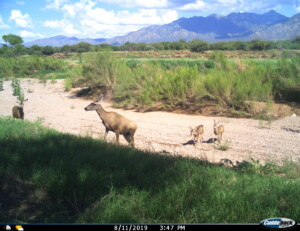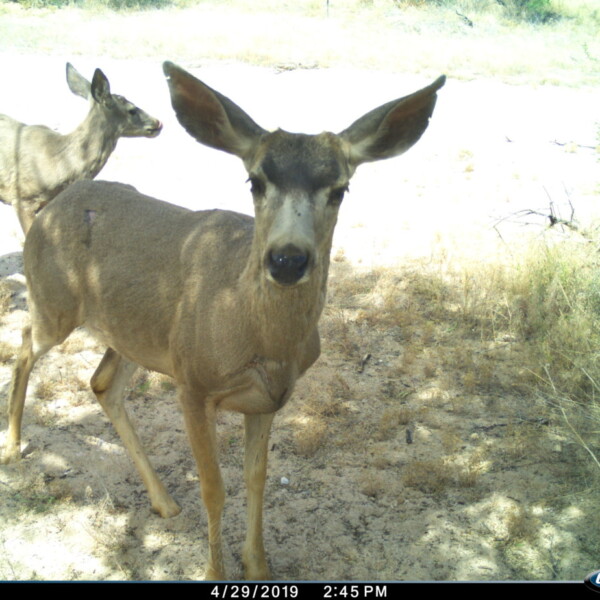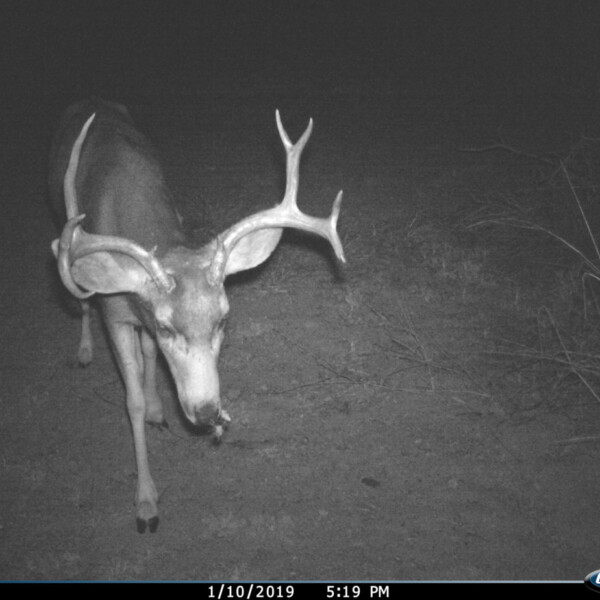You can find mule deer (Odocoileus hemionus) across Western North American. From central Mexico to southern Alaska. They inhabit the deserts, grasslands, chaparral, forests and mountains of the region. In Southern Arizona, they are frequently seen at lower elevations in the deserts and grasslands, but they will move to higher elevations during the warm summer months.
Mule deer have large ears, which give them a name related to mules. In Arizona, they are much larger than the white-tailed deer, ranging from 100-300 lbs. They are a brown color with a white rump and throat patch. Their tails are white with a black tip and have a dark colored forehead between the eyes. Male bucks have forked antlers that shed in February after the breeding season.
Females give birth to 1-2 fawns in the late spring. The youngsters have white spots that help them camouflage. Mule deer form large multi-generational herds to help watch for predators. They are an important prey source for coyotes, bobcats, and mountain lions.
Sources





